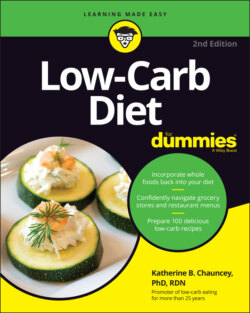Читать книгу Low-Carb Diet For Dummies - Katherine B. Chauncey - Страница 74
Understanding Refined and Processed Carbs
ОглавлениеA refined food is a food that doesn’t contain all its original nutrients. For example, a grain of wheat to make white flour has 16 essential nutrients refined out of it. Five of those (iron, thiamin, niacin, riboflavin, and folic acid) are added back in by the government enrichment program to prevent nutritional deficiencies. All refined foods are processed foods; you can’t pick a refined food out of your garden and eat it. On the other hand, a healthy whole food is considered processed if it has simply been sliced, chopped, rolled, or ground. That is, it has gone through a process, but its original nutrition content is intact.
Most refined and processed carbs are high in glycemic load and may result in hunger soon after their rapid digestion. Refined and processed carbs such as those found in cookies, crackers, rice cakes, bagels, cakes, doughnuts, croissants, chips, pastries, pretzels, most packaged breakfast cereals, white bread, and white rice have a high glycemic load; their easy digestion causes a rapid elevation in blood glucose and insulin levels. After a couple of hours, the blood glucose levels quickly decline, resulting in cravings for more food in some people. This phenomenon may have led to the coining of the phrase carbohydrate addiction.
You don’t have to totally avoid high-glycemic-load foods. You can eat some high-glycemic foods in the presence of low-glycemic foods and the effect on your blood sugar wouldn’t be as great as it would be with high-glycemic foods alone. What you need to be aware of is the percentage of high-glycemic load foods to low-glycemic-load foods. Try to include more low-glycemic-load foods in your diet than high. See Appendix A for more information on glycemic load and glycemic index.
